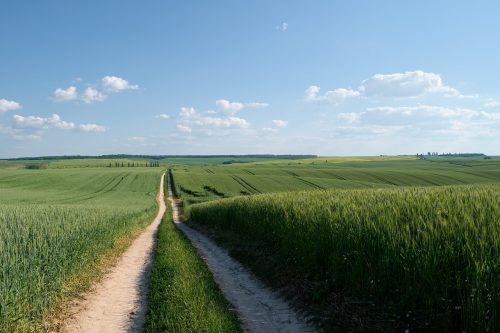A graphene fertilizer carrier could reduce the environmental impact and cost of fertilizer use, according to new research from an Australian industry-research partnership.
In the journal Applied Materials and Interfaces, the researchers report a successful demonstration of a slow release fertilizer made of sheets of graphene oxide loaded with trace elements.
 A graphene fertilizer carrier could make nutrient uptake by crops more efficient and less wasteful. Image: pixabay-1631544
A graphene fertilizer carrier could make nutrient uptake by crops more efficient and less wasteful. Image: pixabay-1631544
Benefit to agriculture and environment
They hope that their innovation will help to meet the increasing need for advanced fertilizers that perform better, release nutrients more slowly, and thereby have less impact on the environment.
They also believe that their paper is the first to report “on the agronomic performance” of a slow-release graphene fertilizer carrier.
“Fertilizers,” says one of the senior study authors Mike McLaughlin, who is a professor and head of the Fertiliser Technology Research Centre at the University of Adelaide, “that show slower, more controlled release, and greater efficiency will have reduced impact on the environment and lower costs for farmers over conventional fertilizers, bringing significant potential benefit for both agriculture and the environment.”
Wonder material with unique properties
Discovered in 2004, graphene is an ultrathin form of carbon that is only one atom thick and with some very unusual properties.
Not a day goes by without news of a remarkable new use for the “wonder material,” from graphene transistors that promise to make computers a thousand times faster, to graphene balls that charge lithium batteries five times faster.
Prof. McLaughlin and colleagues were particularly interested in the fact that graphene has a very large surface area, is incredibly strong, and is able to bind with a range of different nutrients.
‘Still early days’
In their study, they showed that copper and zinc micronutrients loaded onto sheets of graphene oxide was an effective way of feeding plants with micronutrients.
They also found that their graphene fertilizer carrier made the fertilizer granules more robust and therefore easier to transport and spread.
“It’s still early days,” says Prof. McLaughlin, “but there is no doubt that fertilizers with release rates more tailored to crop demand, and fertilizers with greater physical strength and robustness, will both improve grower efficiency of fertilizer application and efficiency of nutrient uptake.”
Mosaic, the industry partner on the project, has an option to licence the graphene fertilizer carrier. It is also pursuing other uses of graphene in fertilizers.
Prof. McLaughlin notes that commercial success will depend, not least, on the cost of graphene and graphene oxide, and finding a way to produce the graphene fertilizer carrier on an industrial scale.
